Event: NCAA Division III men’s ice hockey national championship game.
Date: March 18, 2007.
Place: Wessman Arena, University of Wisconsin-Superior.
The score: Middlebury College 3, SUNY Oswego 3. End of regulation.
Sudden-death overtime: At the 7:17 mark, Brendan McLaughlin ’09 settles in for a faceoff in Oswego’s zone. Here’s the call on student-run
radio station WNYO, which broadcast the game live:
“Faceoff to the left won by McLaughlin. Jumping in front of that is a player for Middlebury, and coming up center ice with it now is [Garren] Reisweber ’09. Reisweber taking it along the board, cutting out in front and HE SCORES! THAT EASY, LADIES AND GENTLEMEN! HE DANCES RIGHT AROUND ROSS CHERRY, AND YOUR LAKERS WIN THE NATIONAL CHAMPIONSHIP! YOUR OSWEGO LAKERS! THE LAKERS WIN! THE LAKERS WIN! …”
The tradition of winning for SUNY Oswego men’s ice hockey started almost as soon as the team took the ice as a club sport in 1964, and continues today, with a current streak of six consecutive appearances in the NCAA Tournament.
Men’s ice hockey at SUNY Oswego celebrated 50 years last November. From the cold, raucous rink inside Romney Field House to the clean, modern confines of the arena in the Marano Campus Center, the Lakers make themselves at home in front of thousands of fans on game nights. This is the story of a celebrated program, as told by some of the players, coaches and supporters who helped shape it—and those who keep it going.
Pete Sears ’71
Sears is the first Oswego hockey player to be named an All-American, and after graduation played on the U.S. Olympic team, which won the silver medal in 1972. After a brief stint in minor league hockey, he returned to Oswego and taught middle school for 30 years. For 23 of those 30 years, he coached Oswego High School’s hockey team that captured 10 league championships. His achievements would get him elected into the New York State High School Hockey Hall of Fame in 2000 and the SUNY Oswego Athletic Hall of Fame in 2001.

Fans in the sold-out arena in the Marano Campus Center cheer on the Lakers during the 2015 Whiteout Weekend game against SUNY Plattsburgh. The game ended in a 3-3 tie.
I think it starts with the coaches. If you look at our history through the years, George Crowe was our first coach. I played for him. Herb Hammond was our second coach. I played for him. I knew what kind of people they were. Tremendous coaches, but better people. When they brought kids in, they brought in certain kinds of kids. Not just great hockey players but solid citizens. Kids that would carry on this kind of tradition. Don Unger ’71, who I played with, he became the third coach. George Roll came in, and I didn’t know George, but I had a chance to be
on the ice with him because he asked me if I’d work with the goalies. Just a tremendous individual. Great, great person.
Over the years, there’s such a tradition that’s developed. Now, especially with Ed Gosek ’83 M’01 as coach, it seems like the last seven, eight years, we’ve come to a point where if we don’t reach the Final Four, some of the fans seem to be disappointed. Every year, you don’t know what’s going to happen. You don’t know about injuries, and every other team is trying to knock us off the top.
It’s that tradition that’s been formed. It’s that bond that has been formed between the players and the school. It’s going to always be there, no matter whether we win it or whether we don’t win it now. It’s been established.
Look at all of these kids who come in, and they don’t want to be the ones to let that tradition down. They’re going to work their butts off to try and maintain that and keep it going.
David Titanic ’14
Titanic, senior captain of the 2013-14 team, led the Lakers on an improbable run to the Final Four. It was supposed to be a season to rebuild, but the Lakers merely reloaded. With 19 freshmen and five transfers, Oswego defeated SUNY Geneseo in the SUNYAC tournament and defeated Babson College in the NCAA quarterfinal before falling to the University of Wisconsin-Stevens Point in the semis.

Members of the 1973 Lakers team knew how to use the old Romney rink’s deep, round corners to their benefit.
You look back and see who’s come before you and there’s a lot of unbelievable guys, character guys. We had Jon Whitelaw ’13 there the year before, just guys that really showed the tradition, the character. So I really felt a lot of responsibility to pass that on to the younger guys. I only had one year with those guys, 19 freshmen, 24 new faces. It was important to make sure they understood the tradition and what they were getting into and who’s come before.
I learned a lot from guys like Whitey and (Chris) Muise and Brownie (Chris Brown ’13). Those guys, they taught me what it takes to get into a lineup. It’s a very, very competitive team to play for. We carry quite a few players, all quality players. They taught me to be patient, to be a good team guy, even when things weren’t going well for you personally. When you’re at Oswego, you’re part of something that’s bigger than yourself.
Pierre Belanger ’69
Nicknamed “The Flying Frenchman,” Belanger logged only 38 games in two varsity seasons (Oswego was a club team for the first two years), yet he is 34th in career points despite playing in about a third as many games as the all-time scoring leaders. Now 68, Belanger continues to play hard, having lost three teeth during a pickup game last summer.
My whole career, I’ve always been one of those guys who liked a little bit of an extra challenge. The fact that they were starting a whole program and so forth, plus it was far from home. I was 500 miles from home (in Berlin, N.H.). I said, ‘Hey, let’s give it a shot.’ So I showed up at Oswego. That was the first time I met George (Crowe). There was no such thing as recruiting on the road. It just went by word of mouth from my coach in high school. So, went to Oswego, met George, met all the other guys trying out.
We were very successful the first year. We brought in some pretty good crowds after the first three or four games. The sport was new to the school. In those days, I hate to say it, but fighting was pretty much allowed. So a couple of times, late in the game, we put on a little show. And the crowds pretty much doubled after those first three or four games. We pretty much started filling the place and I don’t think it’s ever gone down.
Sean Fitzgerald ’89
Fitzgerald scored a goal or was awarded an assist through 48 games, the longest point streak in Lakers history.
I never even knew I had a streak going when it happened. During that streak, one year I had Rob Duke ’88 as my center, and then he got hurt and John Staerker and Sean Green ’90 were on my line. To be honest, those guys are all top 10 in scoring. It kept going because of the talent I got to play with.
Romney Field House was awesome. I’ve been to the [Marano] Campus Center. I come back every year at least once, and the Campus Center’s beautiful, no doubt. Romney was crazy. It was so loud. Fans are right on top of you. It was a great, great place to play. Teams would walk in there and you knew you had them beat already.
Ed Ames ’68
Ames, a member of the Oswego Alumni Association board, played center on Oswego’s first club team in 1964. He scored the deciding goal in the Finger Lakes Collegiate Hockey League 1968 title game, a 5-4 overtime win against then-undefeated University at Buffalo. Ames reflected on the team’s beginnings.
We played Syracuse University’s club team, our first game, and beat them 12-0. Then we played them again a week later up here and beat them 24-0. The following game, we played Hobart and beat them 30-2.
The problem was they didn’t have a lot of skaters on the team. There was a fight, and some of their best players and some of our kids got thrown out of the game. We had three or four really strong lines. We just kept going. The only skaters they had were out of the game. We had decided among ourselves we would skate with the puck into their zone, around the net, and back to the blue line three times before we shot on goal.
There’s a lot less fighting today than there was back then. Guys got into fights, but not like the NHL. College hockey has really done a lot to change that game.
Don Unger ’71
Unger played for Coach Hammond, and took over the team when Hammond left for SUNY Plattsburgh in 1980. Unger spent 16 years as coach, the longest tenure of Oswego’s five coaches. His teams won four SUNYAC titles, recorded 289 wins, appeared in the NCAA Tournament seven times and made the college’s first trip to the Final Four in 1987.
I was very fortunate as a coach. I was recruited by George Crowe, played under Herb Hammond, then was his JV and assistant varsity coach. I inherited some great players and was fortunate over the years to have recruited some great players. Players like Dave Lair ’83, who arguably could be the greatest hockey player to ever play here. He was absolutely a phenomenal hockey player. I watched him with the Canadian National Team and Scotty Bowman (legendary former head coach of the NHL’s Detroit Red Wings) said he was the best player there from the blue line in. That’s how good he was.
![In 2007, SUNY Oswego won its first-ever national team championship, a 4-3 overtime win over Middlebury in the NCAA men’s ice hockey title game. The college community celebrated in the newly completed arena in the [Marano] Campus Center. Inset: Head Coach Ed Gosek '83 M'01 presents 2007 men's ice hockey team member Derrell Levy '09 with a championship ring during a formal ceremony in October 2007.](http://oswegomagazine.wpengine.com/wp-content/uploads/2015/04/30-national-1024x635.jpg)
In 2007, SUNY Oswego won its first-ever national team championship, a 4-3 overtime win over Middlebury in the NCAA men’s ice hockey title game. The college community celebrated in the newly completed arena in the [Marano] Campus Center.
Rick Pratt ’82, Mike Snell ’87 and Sean Fitzgerald ’89 … I don’t want to leave anybody out because there were so many, and those were the offensive guys. There were so many great ones on defense. Paul Mueller was a tremendous goaltender. Tommy McFall ’90, Bob Hagan ’88, Jeff Greene ’88 were great defensemen. My defense and my goaltenders didn’t always get the same stats because I was a run-and-gun, high-powered offense coach, so we would be happy to win 7-5 instead of 2-1. But we had many players who were not just good offensive players, but great team players, great in the community, role models for kids. Just real class people and also great teammates.
George Roll
Roll coached the Lakers for six years, preaching a defense-first philosophy. His last team in 2003 won the SUNYAC Tournament title game, the Lakers’ first championship since 1991. The win came in thrilling fashion: a blast from Don Patrick with 1:57 to play ended Plattsburgh’s six-year stranglehold on the SUNYAC title. Roll reflected on that team.
They were an extremely hard-working group of guys. They were committed to a team-first mentality. We had very good leadership in senior captain John Hirliman ’03 and the young guys followed his footprint. It was a close-knit team, which to me is the most important ingredient to a successful team.
In the history of the Oswego program, it had seemed Plattsburgh was the measuring stick, not only in the SUNYAC but also in the country. We had always come up short against them and to finally get over the hump and beat them was extremely gratifying for all of us associated with the program.
Sue Viscomi
Viscomi is SUNY Oswego’s athletic director.
When one of our teams consistently achieves at a national level, like men’s hockey has done for the last five years, it raises the profile of our entire athletics department in a tremendously positive way. From a recruiting standpoint, our name recognition expands well beyond the borders of New York state. And of course, once a winning reputation has been established, success breeds success and the hope is to cultivate that across all of our other sports.
Our new turf stadium will provide a state-of-the-art competition facility for the sports of field hockey, soccer and lacrosse. With so many high school athletes accustomed to playing on an artificial surface nowadays, this will help level the playing field in enabling our coaches to recruit the best of the best.
Edward Gosek ’83 M’01
In 2007, Gosek’s Lakers went 23-3-3, received an at-large bid to the NCAA Tournament and won the NCAA Division III hockey title. It was Oswego’s first NCAA national championship in any sport. Gosek reflected on the national championship season.

Head Coach Ed Gosek ’83 M’01 presents 2007 men’s ice hockey team member Derrell Levy ’09 with a championship ring during a formal ceremony in October 2007.
The run to the national championship really started two years before, when I served on the NCAA championships committee. You serve on the committee and you try to select the best teams for the tournament other than the teams that get in with an automatic bid. You get to see what it takes to get into the Final Four. I’m watching great coaches like Bill Beaney at Middlebury, who had won five in a row, Mike McShane at Norwich, Tim Coghlin at St. Norbert. There’s one thing for sure: I’m watching and seeing what our shortcomings are, and then knowing that we’re going to be moving into this beautiful facility that President [Deborah F.] Stanley and the college made a commitment to. That was the point I had to make a decision: Do we want to tread water here or are we really going to try and do this, and do it right?
Are we recruiting kids good enough to win a national championship? We have 300, 400 kids a year who want to come to our school. But a lot of these kids, they’re not difference-makers. Many of the players we recruit are Division I athletes who were overlooked for one reason or another. Those are the kinds of student-athletes we go looking for.
In 2008 and 2009, the Lakers were knocked out of the SUNYAC Tournament and missed the NCAA Tournament. Since then, the Lakers have gone to the NCAA Tournament six years in a row.
The year after the national championship, I was not prepared for how big a factor complacency would have on our athletes. We underestimated the way other teams would challenge us to play our “A” game every night. People say, “How in the heck have you made it five years in a row to the Final Four?” And the answer to that consistency is the great leadership that our captains the past five years have brought to the team, but also what we learned after the 2007 season, because it was a humbling experience.
Diane Dillon
Dillon has coached the women’s ice hockey team since 2006, when it was restored by the college. She played inside Romney Field House as a member of Cornell University women’s hockey team against the Lakers in the ’70s and ’80s. Even before that, she traveled to Oswego regularly with her family from her hometown of Tonawanda, N.Y., to watch her brother, Dennis Dillon ’72, play hockey for Coach Hammond.
So I was a little kid coming to Romney. I grew up in a hockey family. For me, it was almost like coming full circle, coming to Oswego.

In 2014, the men’s ice hockey team, under head coach Ed Gosek ’83 M’01, won its 10th SUNYAC championship title. The team went on to compete in its fifth-straight Frozen Four appearance. The 2015 Lakers team advanced to the NCAA Tournament, making it six years in a row.
President Stanley actually insisted that when this building opened, that there be a men’s team on one blue line and a women’s team on the other. That told me they were looking for equal opportunity for men and for women here. That spoke volumes. As a coach coming into a new school, starting a brand new program, I know I have the support of the administration and the athletic department. So I really wanted to make sure we lived up to that challenge.
Coach Gosek was very instrumental in helping me get the lay of the land. I came out of a Division I program and I really ran it that way. It coincided with a lot of things that Coach Gosek does, too, running at a little bit of a higher standard, with higher expectations than what maybe, at that time, a typical Division III program might have done. So, certainly I picked Ed’s brain quite a bit. Any time you have a team with that kind of winning tradition, you’d be a fool not to take advantage of that resource 50 feet down the hallway.
President Deborah F. Stanley
Stanley envisioned a hockey arena inside the Marano Campus Center, which recognizes that the backbone of the college is the athletics program, which in turn is anchored by the men’s and women’s hockey programs.
We’re happy to hold hockey up as a great example on this campus. An example of a winning tradition for many, many years; a tradition of individuals who care about school, who care about the game, who care about the world and they care about one another as well. I’ve seen that over and over again.
We’re very proud of this tradition. This is a special thing that happens at Oswego. You can see it in the way the community comes together, the students come together. We have built strong traditions, and they are continuing to be built. They are changing and growing, but they are as strong as ever.
The Hat Trick—Oswego’s Past, Present and Future
For 50 years, Lakers hockey has had consistent coaching and talented players with high character. It has had strong support from the college administration and the community. Oswego had been home to the oldest rink in the SUNY system at Romney Field House, and now has the newest rink—a modern showpiece in the arena in the Marano Campus Center. Hockey is a source of Oswego pride, and rightfully so.
No one can know what the next 50 years will bring. But for Lakers hockey and Oswego athletics, the best years may lie ahead.

You might also like
More from Alumni Profiles
Astrophysicist, Yale Professor Credits Oswego with Setting His Course for Stellar Career
Astrophysicist, Yale Professor Credits Oswego with Setting His Course for Stellar Career Earl Bellinger ’12 is one stellar guy. A quick review …
BHI Alumnus from Liberia Gains World of Experience
BHI Alumnus from Liberia Gains World of Experience Otis Gbala M’23 became the first SUNY Oswego graduate who studied from Liberia …
Couple’s Loyal Support for Oswego Spans Five Decades
Couple’s Loyal Support for Oswego Spans Five Decades Marilynn “Lynn” Nagy Farrar ’61 and Neil Farrar cherish their memories of Oswego …











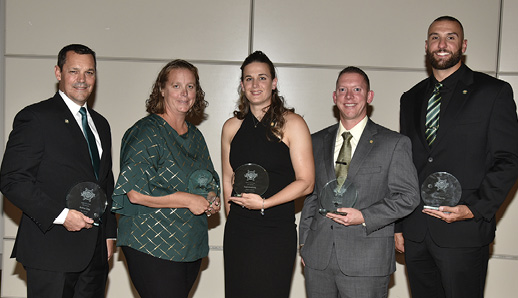
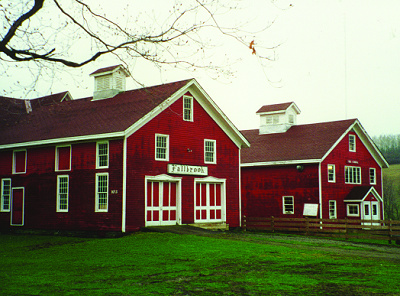


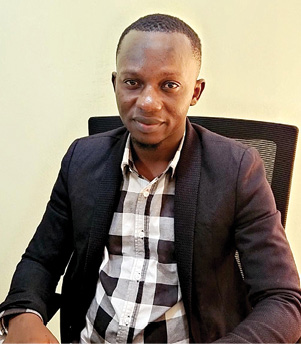
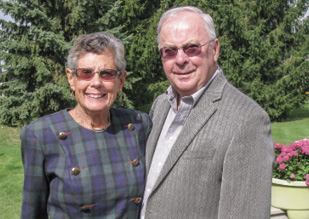
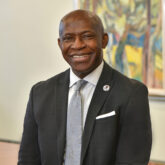
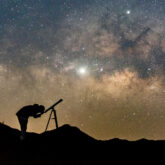
1 Comment
I am proud to say I had the opportunity to play on the Oswego team during the 1981-1982 and 1982-1983 seasons as a transfer Goaltender from Erie Community College and the Buffalo Junior Sabres before that. I played for probably one of the most talented teams that started the tradition of NCAA appearances making to the first round against U-Mass Lowell in 1982 and 1983 as we lost one and one one game but lost the goal total to advance to the Frozen 4. Lowell eventually went on to win the NCAA Championship against Plattsburgh State in 1982 and R.I.T. Won the NCAA Championship in 1983. Ironically both Lowell and RIT went on to dominate Division I hockey just a few years later.
Frank “Foggy” Tobias